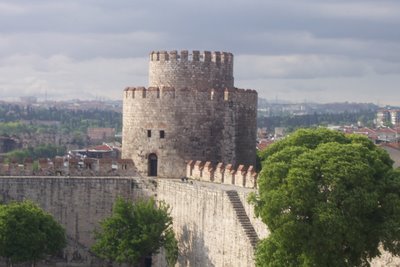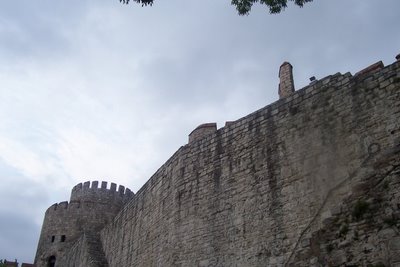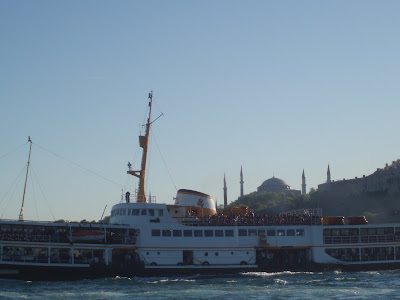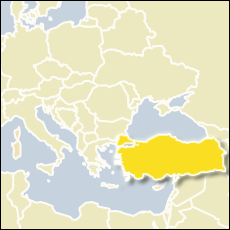

The group of nine islands in the Sea of Marmara is known as the Princes' Islands and is only an hour away from the city. There are regular boat services to four of the islands from the entrance of the Golden Horn and Kabatas. Pier.
In Byzantine times a number of monasteries were built here, and the islands served both as summer resorts and a place for exiles. Copper was mined in Heybeli Ada. On this island, in the courtyard of the Naval Academy there is a small church dedicated to the Virgin. This is the last Byzantine structure in the city.
The steamboats that started serving the islands in the early 19th century facilitated access to the islands, and the population started to increase rapidly when schools and hotels were built.
The four larger islands grouped close to each other are covered with summer residences, villas and pine groves, and are famous for their beaches and picnic areas. The islands are crowded between May and late September, but deserted in other times. The residential areas have developed mostly around the piers and those sides of the islands facing the city. The only means of transport on the islands are horse-drawn phaetons. During the summer season, and particularly on holidays, the bays and beaches attract private yachts and motorboats.
There are no settlements on the conical shaped Hayirsiz Ada, the first island seen from the ferryboat, nor on the next one, the flat Yassi Ada. The boat first stops at Kmah Ada, famous for its open beaches and the little cove at the rear. On this island the horse carriages are for transporting goods only, and not for passenger transport. There is a small, modern mosque on the shore and some beautiful old mansions.
Burgaz, with its rocky beaches, comes after Kmah. The premiere sailing and water sports club on the islands is here. The house of Salt Faik Abasiyanik, the famous writer, who lived on the island has been converted into a museum, and in Kalpazan Kaya, a place he used to visit often, there is now a cafe where one can watch a marvelous sunset.
Between Burgaz and Heybeli there is the private Kasik (Spoon) island, so-called because of its shape.
Approaching Heybeli Ada, there are two large buildings that catch the eye. One is the Naval Academy, situated between the twin hills of the island, and the second is the Greek Orthodox High School, set on top of the other hill in the middle of pine groves, which is closed today. Another building of the Naval Academy is located near the pier. On the other side of the pier the shore is lined with restaurants and cafes. On the rear of the island there is a beautiful cove, and on the side overlooking Ka§ik island a public beach, the facilities of the marine sports club, and the famous Degirmen picnic area.
There are special paths for hiking over the hills and through the pine groves, offering beautiful vistas. Heybeli is relatively lively even in the winter months because of the schools and the sanatorium facilities here. The Halki Palas Hotel, dating back to mid-19th century, is open the year round. It was renovated and modernized in 1995.
The largest and the most famous of the islands is Buyukada. It takes two hours to go around the island in a phaeton, but the half-tour of the island, which takes only one hour, is more interesting.
The Yoriik All public beach is in a wonderful cove on the side overlooking the Heybeli. Next to it is the Dil promontory, a favorite spot for picnickers. In contrast to the heavily populated residential areas near the pier, the southern part of the island is quite desolate. Boats often visit the coves on this side.
On the higher slopes of the island, there is an old dilapidated hotel from the 19th century, perhaps the largest wooden structure in the world, which is trying to remain standing until the day when it will be restored. The area around the pier is colorful and bustling with the restaurants, cafes and shops situated here. There are four hotels that cater for guests in the summer months.
The next island is Sedef, which is inhabited, and the beach there is open to those coming from the outside.
The beautiful houses, well-kept gardens and the extraordinary views of the islands make an unforgettable impression on visitors.











































